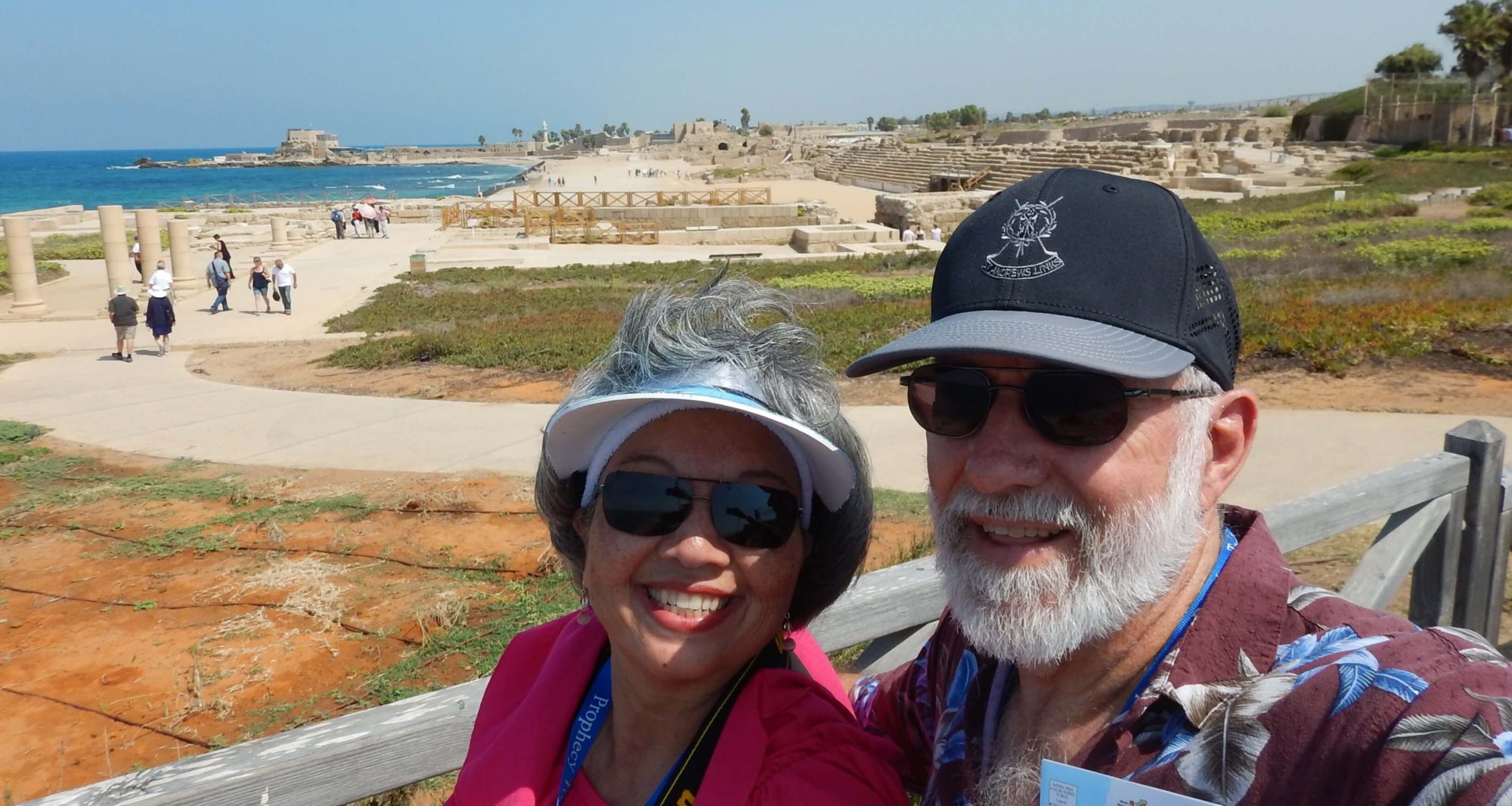Malaga started out very promising. No rain, but a very cool breeze. We started our tour early, heading to an overlook of the city. We could see the port and our ship quite clearly. Additionally, we could see the city’s bullfighting arena. The shoreline was beautiful!
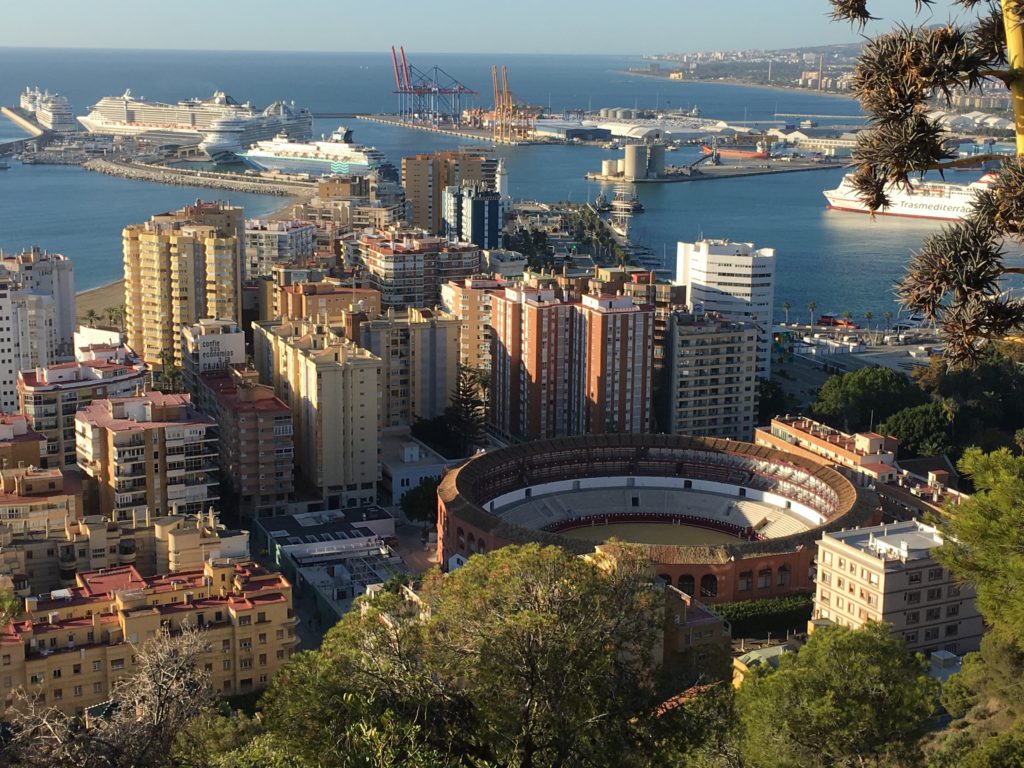
(City overlook with bullfighting arena in foreground. Our ship can also be seen. It is the second one on the dock, pointing in a different direction than the other ships)
From there, we went to a city square that was near the home and school of Pablo Picasso. It happened to be across from the apartment home of Antonio Banderas, although we did not see him!
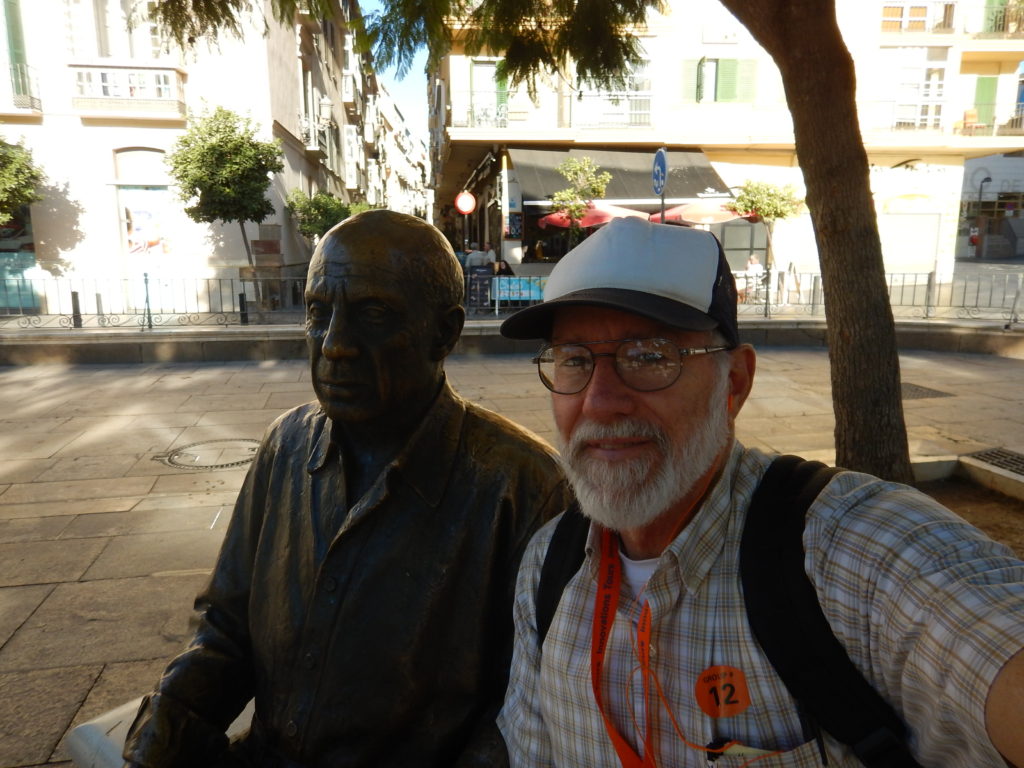
(Pablo and John)
As we strolled through the town, we saw the old Jewish quarter, the Picasso Museum, and the Church of St. Augustine. After that, we went to the Cathedral of Malaga. It was built between 1528 – 1782 on the site of an Islamic mosque. It was very similar to other cathedrals we have visited, including the golden inner domes, the religious paintings and sculptures, and stained glass windows.
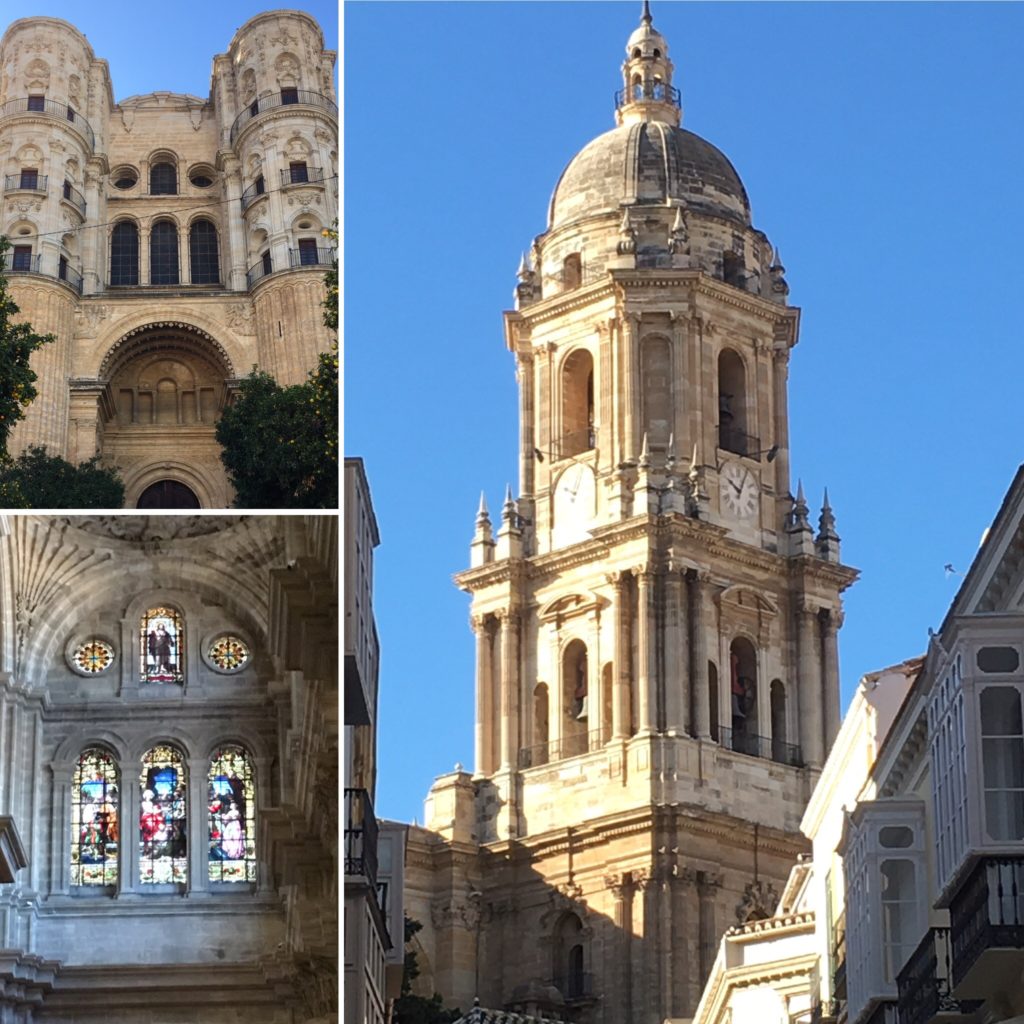
(Malaga Cathedral)
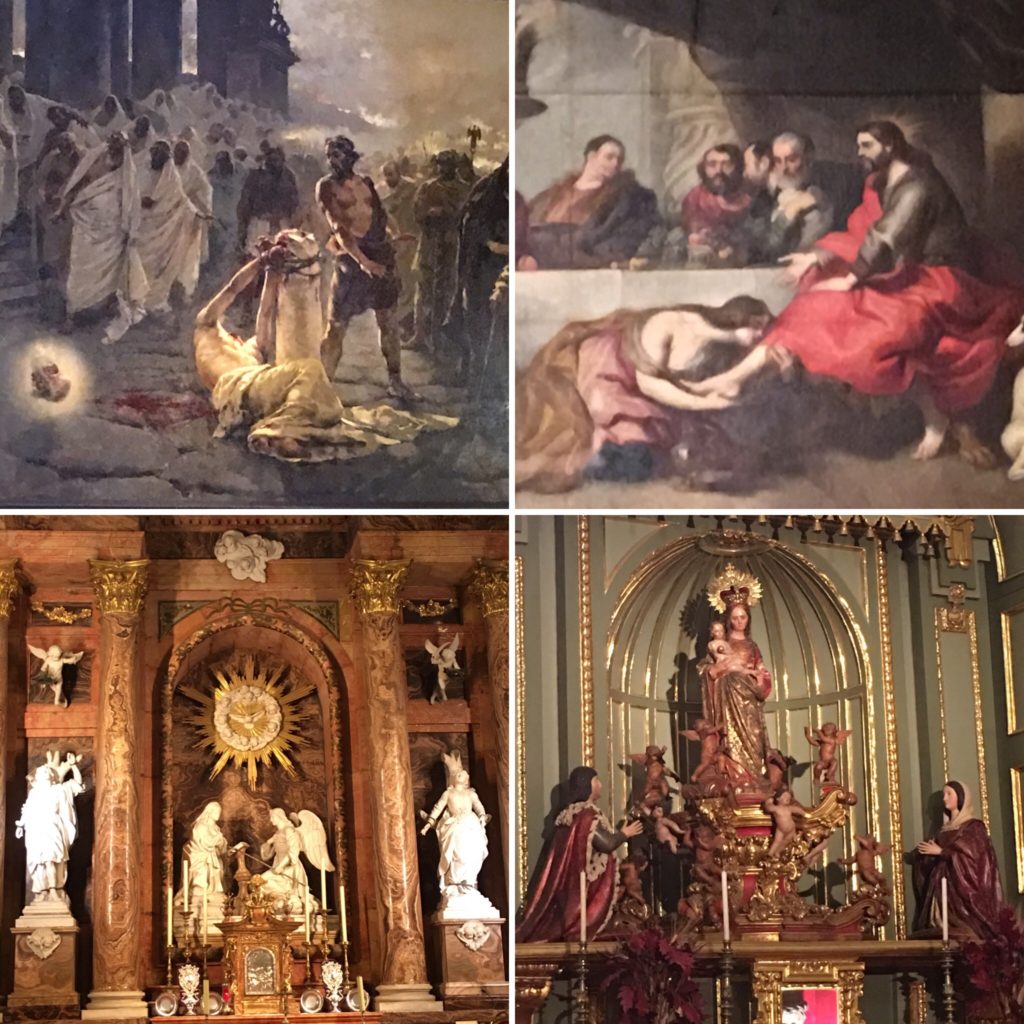
(Cathedral art clockwise from top-left: beheading of Paul, anointing of Jesus’ feet, Ferdinand and Isabella praying to Mary, the annunciation)
From here, we walked to a Roman amphitheater and the Alcazaba, a Moorish fortress. The amphitheater is nestled at the foot of the fortress, and is the oldest monument in Malaga. It was built in the 1st century AD by Emperor Augustus. Today, it is used for open-air performances.
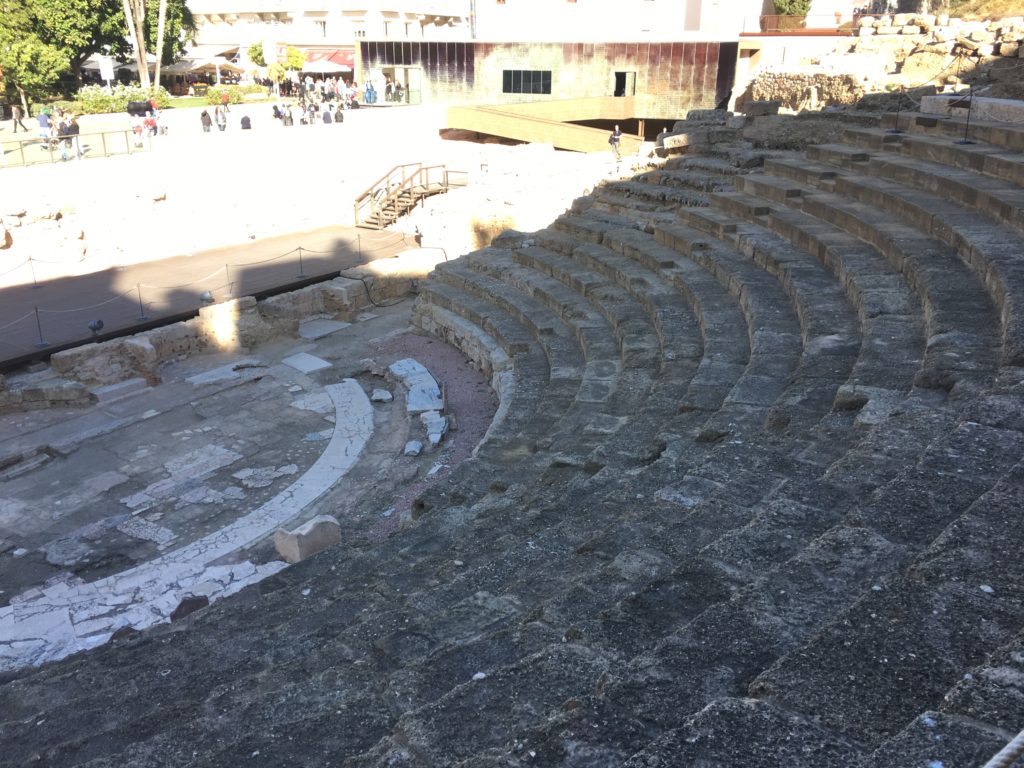
(amphitheater)
The Alcazaba was built by the Arabic conquerors to ward off pirates in the 8th century, and it served as a citadel for the conquering powers for more than 700 years. From the top of this fortress, we had a breathtaking view of the city and coastline.
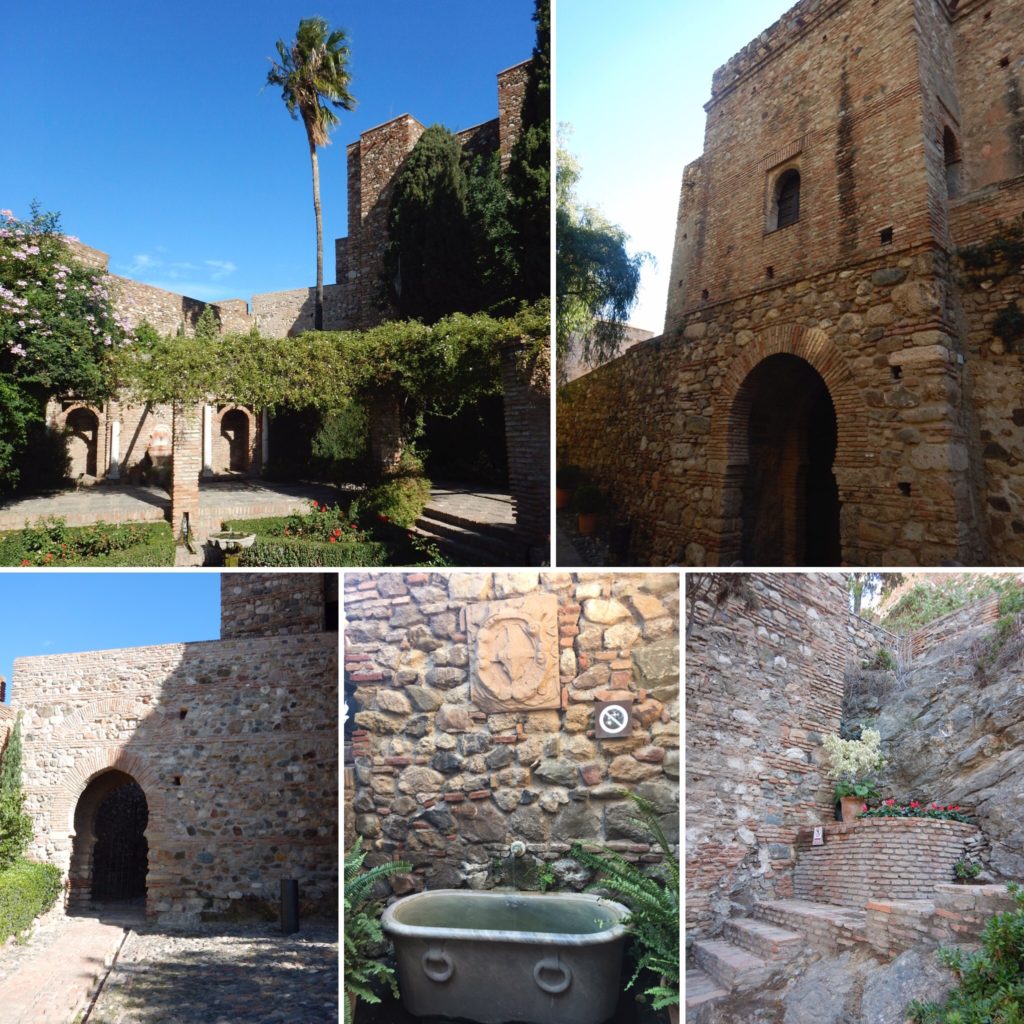
(Alcazaba collage)
Malaga remained under Moorish rule until the 15th century. It was here in Malaga that Queen Isabella of Castile and King Ferdinand of Aragon united leading to the reconquest of Spain and the Moors’ surrender in 1492.
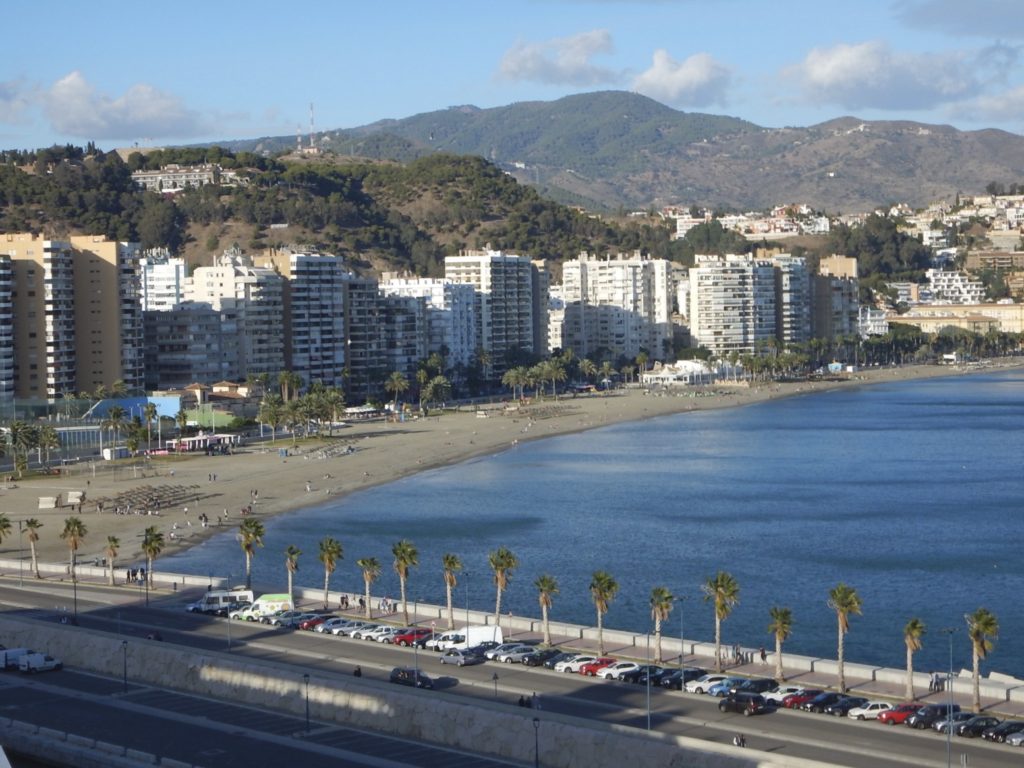
(Malaga beach)
